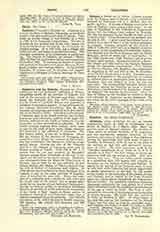

Calama, a titular see of Africa. Calama appears to be the Roman name of Suthul, a city in Numidia, besieged by Postumius 110 B.C. (Sallust, Bel. Jugurth., xxxvii). It became a Roman municipium as early as Hadrian, and a colony a little later. In the time of Diocletian it was included in Proconsular Africa, but its bishops were subject to Numidia. The city was captured by the Vandals on their arrival in Africa (429). Count Bonifacius was defeated near the city in 431. A great many inscriptions found at Guelma have proved that it is the modern substitute for Calama. Guelma, occupied by the French in 1836, is today the chief town of a district, or arrondissement, in the department of Constantine, Algeria; it is situated near the River Seybouse and the Djebel Mahonna, about 81 miles east of Constantine. It has 7300 inhabitants (1500 French), and is an important cattle market. Among its ruins are a Byzantine citadel and walls built by the Patricius Solomon during the Byzantine reoccupation. Four bishops are known: Donatus, 305; Megalius, who consecrated St. Augustine in 395 and died in 397; St. Possidius, elected in 397; Quodvultdeus in 484. Possidius was a disciple of Augustine in the monastic life; at Calama he suffered grievous persecution from heathens and Donatists, and was obliged to leave his city for some time. The contemporary Donatist bishop was Crispinus; among the heathens we know a certain Nectarius, a correspondent of St. Augustine. Possidius disarmed his enemies by his charity. After the sack of Calama by the Vandals, he retired to Hippo and attended St. Augustine on his deathbed. He also wrote the life and a catalogue of the works of his master.
S. PETRIDES

